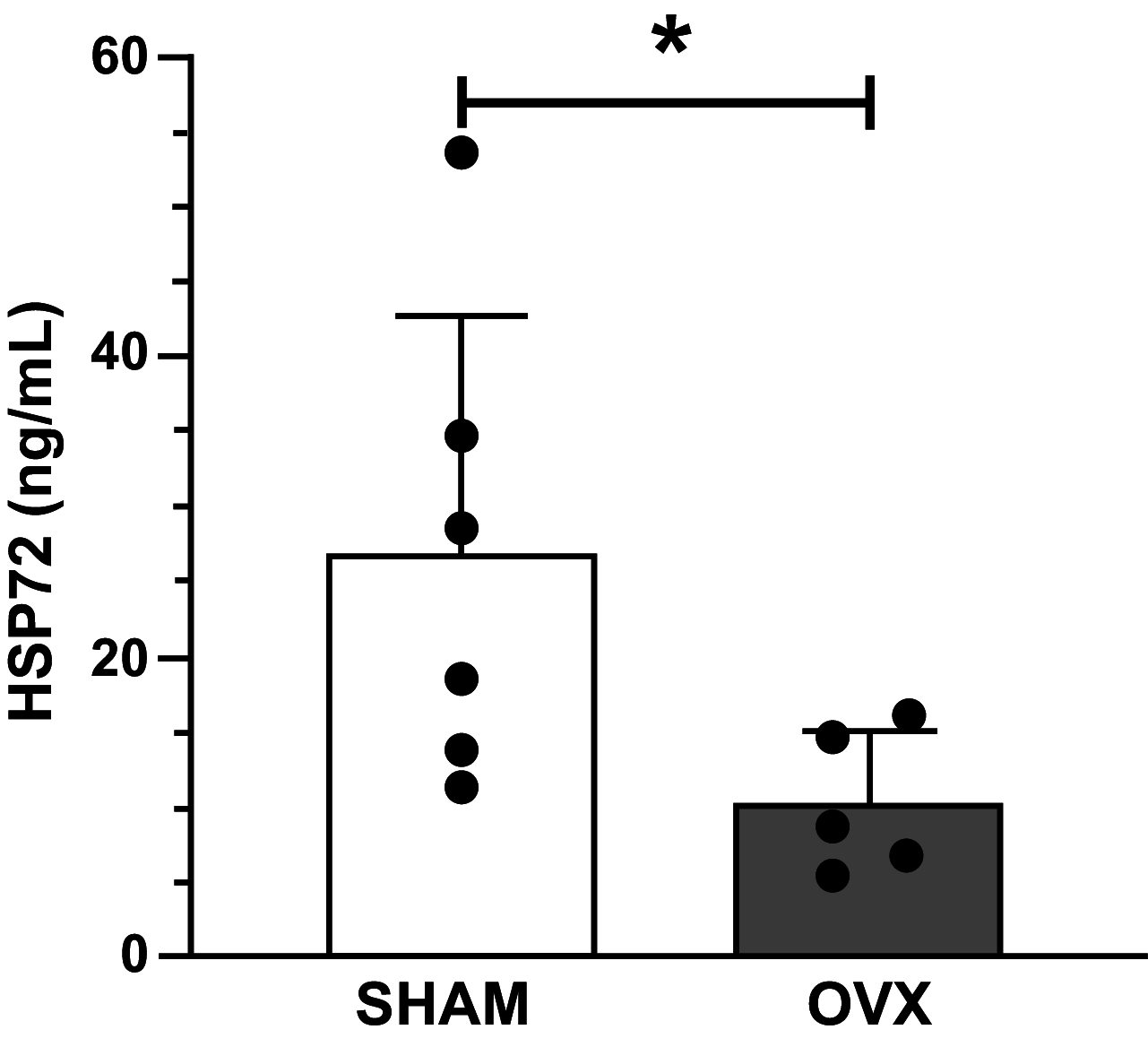Ovariectomy aggravates the pathophysiological response to exertional heat stroke in mice
- PMID: 37022961
- PMCID: PMC10151055
- DOI: 10.1152/japplphysiol.00092.2023
Ovariectomy aggravates the pathophysiological response to exertional heat stroke in mice
Erratum in
-
Corrigendum for Rentería et al., volume 134, 2023, p. 1224-1231.J Appl Physiol (1985). 2023 Oct 1;135(4):730. doi: 10.1152/japplphysiol.00092.2023_COR. J Appl Physiol (1985). 2023. PMID: 37679311 No abstract available.
Abstract
Female mice have a greater capacity for exercising in the heat than male mice, reaching greater power output and longer times of heat exposure before succumbing to exertional heat stroke (EHS). Differences in body mass, size, or testosterone do not explain these distinct sex responses. Whether the ovaries could account for the superior exercise capacity in the heat in females remains unknown. Here, we determined the influence of ovariectomy (OVX) on exercise capacity in the heat, thermoregulation, intestinal damage, and heat shock response in a mouse EHS model. We performed bilateral OVX (n = 10) or sham (n = 8) surgeries in young adult (4 mo) female C57/BL6J mice. Upon recovery from surgeries, mice exercised on a forced wheel placed inside an environmental chamber set at 37.5 °C and 40% relative humidity until experiencing loss of consciousness (LOC). Terminal experiments were performed 3 h after LOC. OVX increased body mass by the time of EHS (sham = 3.8 ± 1.1, OVX = 8.3 ± 3.2 g, P < 0.05), resulted in shorter running distance (sham = 753 ± 189, OVX = 490 ± 87 m, P < 0.05), and shorter time to LOC (sham = 126.3 ± 21, OVX = 99.1 ± 19.8 min, P < 0.05). Histopathological assessment of the intestines revealed damage in the jejunum (sham = 0.2 ± 0.7, OVX = 2.1 ± 1.7 AU, P < 0.05) and ileum (sham = 0.3 ± 0.5, OVX = 1.8 ± 1.4 AU, P < 0.05). OVX increased mesenteric microvascular density (sham = 101 ± 25, OVX = 156 ± 66 10-2 mm/mm2, P < 0.05) and decreased concentration of circulatory heat shock protein 72 (HSP72) (sham = 26.7 ± 15.8, OVX = 10.3 ± 4.6 ng/mL, P < 0.05). No differences were observed in cytokines or chemokines between groups. Our findings indicate that OVX aggravates the pathophysiological response to EHS in mice.NEW & NOTEWORTHY Females outperform males in a mouse model of exertional heat stroke (EHS). Here, we show for the first time the impact of ovariectomy (OVX) on EHS pathophysiology. OVX resulted in a shorter exercise capacity in the heat, greater intestinal damage, and lower heat shock response following EHS.
Keywords: exercise; female; heat illness; hormones; hyperthermia.
Conflict of interest statement
No conflicts of interest, financial or otherwise, are declared by the authors.
Figures





Comment in
-
Of mice and women: murine model provides unique insight into mechanisms of exertional heat stroke.J Appl Physiol (1985). 2023 Jun 1;134(6):1549. doi: 10.1152/japplphysiol.00247.2023. J Appl Physiol (1985). 2023. PMID: 37307792 No abstract available.
References
-
- Update: Heat Illness, Active Component, U.S. Armed Forces, 2020 [Online]. Mil Health Syst, 2021. https://armymedicine.health.mil/MHSHome/News/Articles/2021/04/01/Update-... [2021. Sep 5]. - PubMed
Publication types
MeSH terms
Substances
Grants and funding
LinkOut - more resources
Full Text Sources

